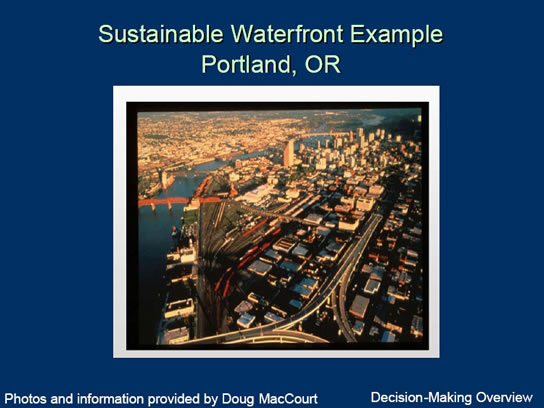Tutorials on Systems Thinking
Complex decision: Sustainable Waterfront Example

2 / 6
As an example of a complex decision, consider the challenges faced by the City of Portland, OR. Portland is Oregon’s oldest, largest, industrial shipping and commercial center. With the goal of promoting "a sustainable future that meet's today's needs without compromising the ability of future generations to meet their needs," the City of Portland has committed to:
- Support a stable, diverse, and equitable economy.
- Protect the quality of the air, water, land, and other natural resources.
- Conserve native vegetation, fish, wildlife habitat, and other ecosystems, including the endangered salmonids.
- Minimize human impacts on local and worldwide ecosystems.
The City of Portland wanted to balance the region’s growth by maintaining a compact urban area with easy access to natural areas (including the harbor), open space, farm, and forestlands. Above all else, Portland's Central City Plan Fundamental Design Guidelines call for integration with the Willamette River: "The river is the Central City's most significant geographic feature and acts as the binding element," the Guidelines state. "The river is also a center for activity; important to Portland's overall economic health and livability. The river's importance is measured not just as a working river, but also in terms of its aesthetic, recreational, and tourism potential."
The City of Portland also wanted to protect the industrial land resources and promote job-based growth on industrial lands served by existing infrastructure. Redevelopment of several large Brownfield sites concentrated in the urban waterfront became a key policy objective of the city and the region.